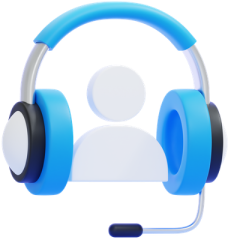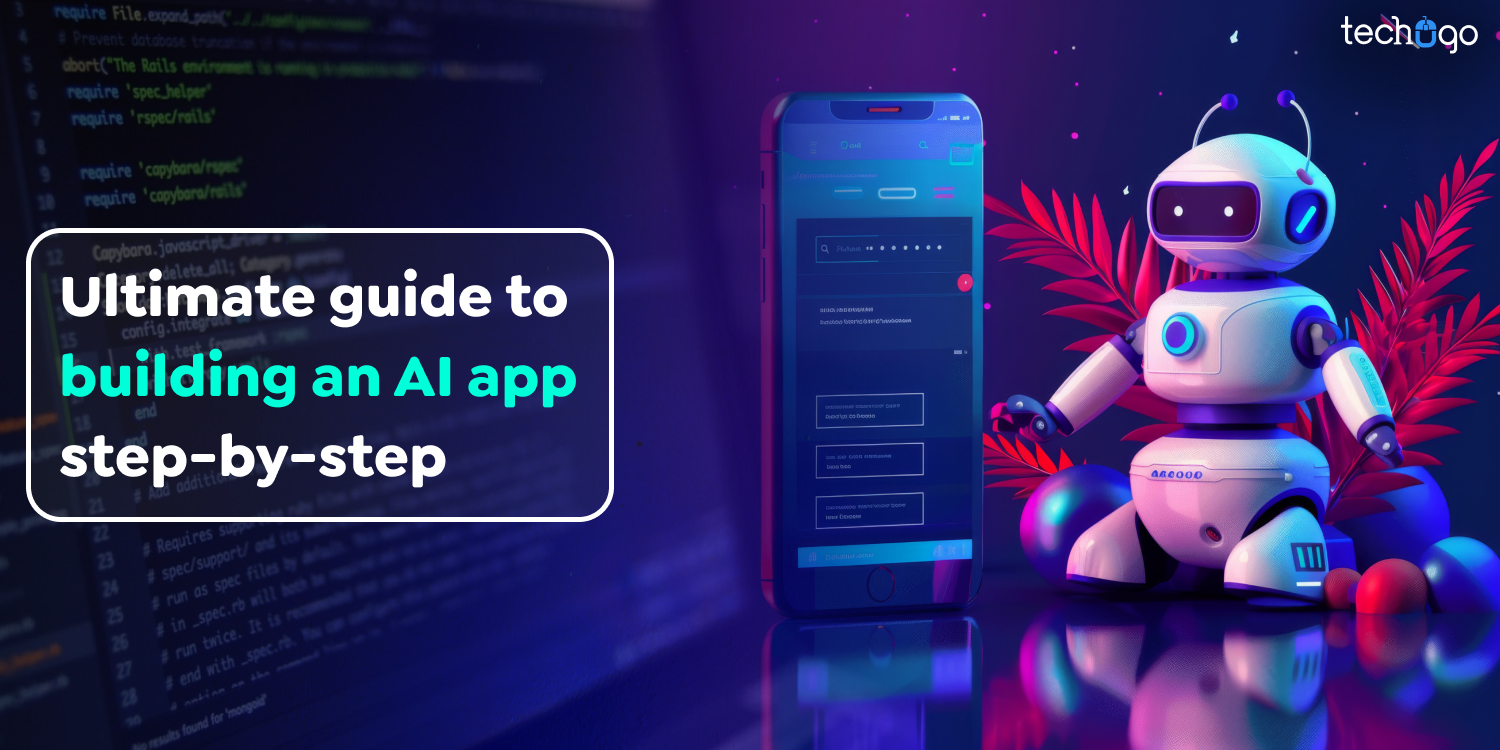1 Oct 2024
The Complete Guide to POS Software Development: Types and Benefits
Matthew Connor

Point-of-sale (POS) systems, comprising the hardware and software that facilitate sales transactions for companies, have become a regular part of business operations. Grand View Research predicts that the mobile-based POS payment systems market is expanding rapidly. In 2023, it was valued at USD 103.83 billion, and by 2030, it is expected to reach USD 181.5 billion at an average annual compound growth rate of 8.3 percent. Mobile payment transactions at POS have already exceeded USD 0.79 trillion and are projected to increase significantly to surpass USD 1.45 trillion over the next four years, according to Statista estimates.
Currently, Square holds the highest market share, with 29.80 percent, according to 6sense. Other notable competitors, such as Toast and Clover, have 25.24 percent and 7.06 percent shares, respectively. This market expansion opens up new opportunities for innovative POS software development solutions. In this context, we will review how to create POS software that provides the most valuable knowledge.
What is Point Of Sale (POS) Software?
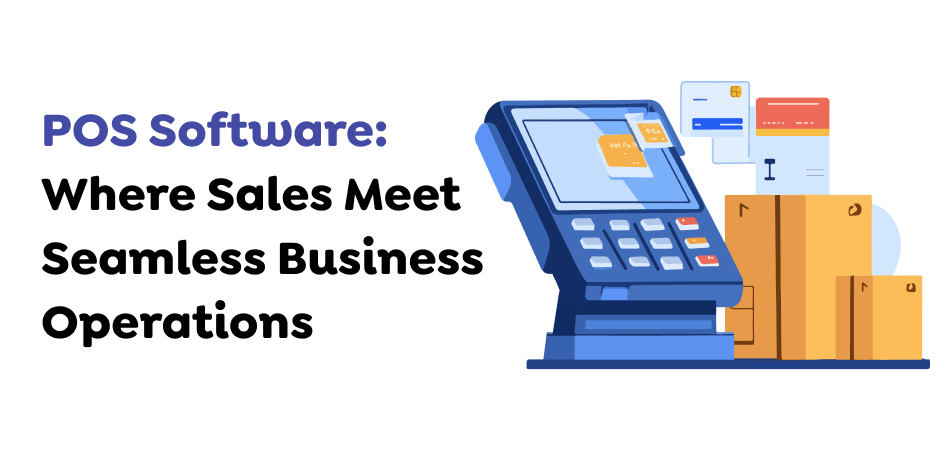
The Point of Sale (POS) software provides the program that lets POS hardware process transactions. It functions as the backend to in-person transactions that process credit card transactions, calculate product prices, including all fees and taxes, and print or send receipts.
POS software development can transform every smartphone or tablet into a point-of-sale system. Due to its advantages, such as flexibility and efficiency, point-of-sale (POS) software has evolved into an essential tool organizations use to enhance customer services and streamline operations.
Also Read : Driving the Future: A Comprehensive Guide to Automotive Software Development
Key Statistics on the POS Software Market
- The global POS market size for software in 2022 was USD 11.99 billion. It is anticipated to expand by a CAGR of 10.8 percent between 2023 and 2030.
- The global POS market size for software in 2023 was USD 11.8 billion. It is projected to grow to USD 23.1 billion by 2032. The CAGR is 7.6 percent between 2024 and 2032.
- The worldwide POS industry’s size for 2020 stood at 14.58 billion, and the projected CAGR was 11.34 percent from 2021 to 2026. North America held over 30 percent of the revenue share in 2019.
- The global POS software market was USD 9.68 billion in 2021. It is predicted to reach USD 22.73 billion by 2030, accompanied by an estimated CAGR of 10.8 percent from 2023 until 2030.
Why Use Point of Sale Software (POS Software)
POS software development offers numerous advantages to companies across various industries. Here are some reasons that businesses should consider using POS Software:
Automated Transactions
POS software simplifies transactions to make them quicker and more efficient for businesses, such as making sales, accepting payments, and generating smooth procedures.
Accuracy and Reduction of Errors
Automated calculations in point-of-sale systems can reduce human error when pricing, taxing, or managing inventory. They also help maintain accurate financial records and ensure data integrity in general.
Inventory Management
POS software usually comes with inventory management functions to aid businesses with tracking their inventory levels, coordinating the product’s variations, and generating reports on stock movements, which can help control stock levels and lessen the chance of overstocks or stockouts.
Sales Analytics and Reporting
POS systems produce comprehensive sales, customer preferences, and other relevant metrics that companies can use to gain valuable information about their performance, make better decisions, or spot patterns.
Customer Relationship Management (CRM)
Most point-of-sale systems have CRM capabilities, allowing businesses to track customers’ purchases, preferences, and other contact information. This allows for targeted marketing, customized promotions, and increased customer engagement.
Employee Management
POS software often includes tools for monitoring employees’ roles, tracking sales performance, and observing working hours. These tools also help schedule meetings, review performance, and manage a general workforce.
Integration With Other Systems
POS systems easily integrate with different business applications, such as E-commerce, accounting programs, and payment gateways, to simplify operations and ensure that data remains consistent between systems. This integration will ensure that operations run smoothly since it ensures consistency of data across all platforms utilized by businesses.
Promotions and Discounts
Through POS software, making promotions or discounts, loyalty programs, or offers to retain customers has never been easier or quicker! Making this happen will help attract new customers while encouraging them to return and increase overall customer satisfaction.
Also Read : How Offshore Software Development is Shaping Global Business Growth
Security Features of POS Systems
Most point-of-sale (POS) systems have built-in security features to safeguard against unauthorized access and fraud. These features include secure payment processing, user authentication, and data encryption
Effective report-making for Tax Compliance
POS software makes it much easier to prepare accurate sales and financial reports to comply with tax laws. Businesses can keep precise records while finding the necessary information to prepare their tax returns.
Flexibility to Business Needs
Most point-of-sale (POS) systems can be tailored to fulfill the specific requirements of different industries, including restaurants, retail stores, and service-based businesses. From restaurant and retail establishments to service companies with particular requirements, POS software can meet their needs.
POS software can help businesses increase efficiency and control by automating transactions, providing information through reports, effectively directing inventory, and enhancing customer relationships. Companies in the modern age, where speed, accuracy, precision, and a data-driven approach to decision-making are crucial, greatly benefit from this kind of POS software.
Also Read : How Offshore Software Development is Shaping Global Business Growth
Types of POS Systems
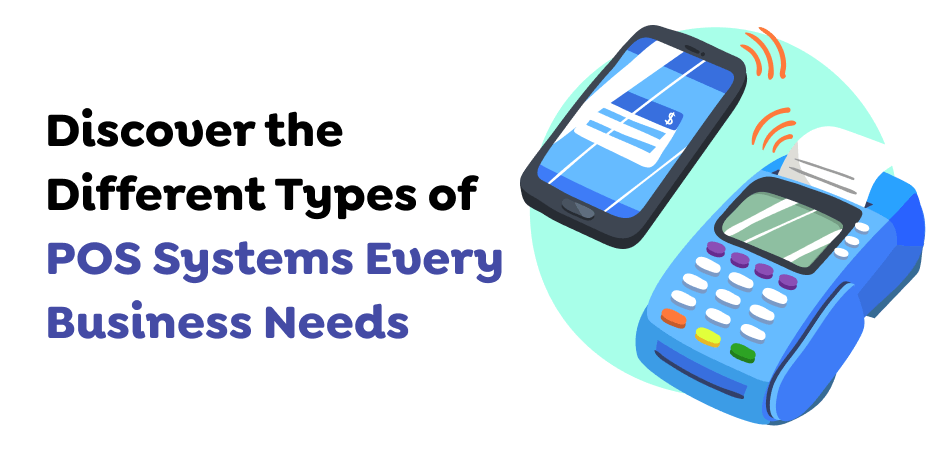
Here are the different kinds of POS systems. Check out the table below.
Mobile POS
Mobile POS systems work well for companies that are always in motion and need help managing inventory. They are user-friendly and portable. To make receipts, you connect POS software to a mobile phone or portable printing device. You can also email receipts directly to customers.
This is why Mobile POS systems are utilized mainly by event vendors, merchandise sellers, contract workers, and daycare providers.
Terminal POS
Terminal point of sale (POS) Systems are found in full-service restaurants, grocery and retail stores, salons, boutiques, spas, and antique stores. They’re typically based on hardware but still require a connection to the Internet or cloud-based software.
TerminalPOS is usually advertised as an all-in-one solution since it includes cash drawers, barcode scanners, 24×7 support, and cloud backup.
Cloud-hosted POS
Entrepreneurs typically use cloud-hosted point-of-sale (POS) platforms. Their most appealing aspect is that they’re not just simple to use but also provide additional terminal point-of-sale (POS) solutions features.
Moreover, as cloud-hosted POS systems don’t run on local servers, they are simple to manage. They’re also flexible and cost-effective.
Components of a POS System
POS Software
Software in the POS system allows companies to scan their items to check reports, scan items, and monitor customers.
Cash Drawer
A cash drawer is a drawer for cash and payment receipts. It is generally found in POS terminals and comes with software that monitors the number of times a cash drawer has been opened to guard against fraud.
Receipt Printer
A printer small enough to print a slip of paper that includes the order number of the client to refer to. Businesses can even personalize receipts with their logos or opt for paperless receipts by sending receipts via email.
Magnetic Stripe Readers
The device records credit/debit card details to process transactions. Magnetic stripe readers can be integrated into the POS system so customers can enter PINs. Some even come with a screen for signatures, on which users can digitally authenticate their transaction receipts.
Barcode Scanners
Most commonly employed for retail shops. Barcode scanners precisely display product details, such as pricing inventory levels, stock levels, or descriptions.
Associate Display
Many modern POS systems have this feature. It allows stores to confirm item scans, bill amounts, customer information, and payment modes.
Note: All these elements may differ from one point-of-sale (POS) device to the next.
Also Read : Unlocking Success with Nearshore Agile Development: A Comprehensive Guide
How Can You Build a Custom POS System?
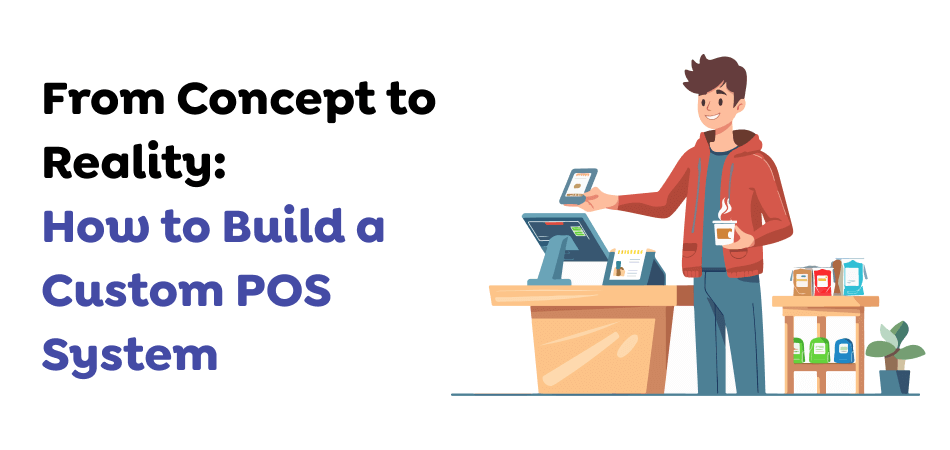
Setting up your Point-of-Sale (POS) system requires various steps and considerations. Here is a guideline to help get you on the right track:
Define Requirements:
Develop requirements specifically tailored to your company or its recipients, taking into consideration aspects like the type of product or service, the procedure for managing inventory, reporting requirements, and integration into other systems.
Select Platform and Technology:
Once you understand which application or platform you wish to create—such as a web-based POS system, mobile app, or desktop software—select an apt technology stack that meets your requirements and expertise (for instance, programming languages/frameworks).
Create an Engaging User Interface (UI):
Create an easy-to-use POS interface that will satisfy both cashiers and customers. An optimal design should allow for swift transactions while remaining comfortable for both.
Database Design:
When creating a reliable database to store product information, such as inventory levels, transactions, and customer information, it should be easy to use and allow access via an effective Database Management System (DBMS).
Payment Processing:
Develop secure payment processing solutions that conform to industry guidelines and protocols. These solutions allow you to ensure that transactions with credit cards are processed safely and securely. Integration with payment gateways can make customers feel more secure when they shop.
Inventory Management:
In designing features that aid in managing inventory, like adding items, updating stock levels, and preparing reports, barcode scanning is also used to increase effectiveness.
User Authentication and Security:
Create authentication measures to ensure the security of sensitive data that staff members and administrators in your organization need to be encrypted in line with industry best practices.
Receipt Generation:
To create receipts efficiently and automatically. They will provide details about the items purchased, the price paid, taxes assessed, and discounts, if appropriate.
Reporting and Analytics:
Develop reporting capabilities to provide a clear view of sales numbers, inventory turnover rates, and other performance indicators (KPIs) useful for making informed business decisions. This will, in turn, help companies make better choices about their future actions.
Integration:
If possible, connect the point of sale (POS) device with one of the other systems, such as accounting or Customer relationship management (CRM) software or online shopping cart platforms.
Assuring A Thorough Examination
To ensure the optimal functioning of your POS system under all conditions, Conduct thorough tests and analyses to find any errors, bugs, or security vulnerabilities. Ensure you keep an eye on security risks.
Compliance:
To maximize your experience, ensure your POS system complies with the applicable rules and regulations to process payments and data security.
Deployment:
After testing, you can deploy your POS system in its intended environment and provide assistance and training for its users.
Maintain and Updates:
POS systems must be regularly maintained and updated to resolve potential issues, add new features, and keep up with the latest technological developments.
Creating a practical point-of-sale (POS) system is a complex task. Developing a secure and reliable program requires expert guidance from a POS software development company with experience in software creation, payment processing, and security. Additionally, it’s important to consider any regulatory or legal limitations on the use of payment systems or data handling in your region. These restrictions could significantly impact your system’s design and implementation.
Also Read : Unlock the Future of Software Development: Key Trends in 2024
Advantages of POS Systems for Retail Stores

The POS system can offer many advantages. Any system that speeds the process and makes it easier to manage is a win-win situation, particularly for retail businesses. So, POS systems are the most important thing for companies, and the following explanations provide the reason.
Makes it Easier to Run your Business
Retail companies are often in the red to run operations and complete orders. Many do not have the patience to wait in line, and no one likes manually billing every item. For instance, in coffee shops, those who typically get their regular order in the morning while en route to work could quickly get their complete order ready for delivery via the coffee POS.
When the screen is scanned, it automatically displays the product’s name and type, the quantity, the price, and other needed information. The person working at the counter isn’t required to enter the information on their own. If it’s time to process returns or cancellations of orders, the POS system can process them quickly and increase the inventory in a matter of minutes. This allows retailers to be more informed about the merchandise readily available.
Simple Inventory Management
Retailers require more efficient inventory management systems to keep track of their stock. It is even better if they are equipped to update their inventory in real-time. This is advantageous for retailers when they need to check the availability of products that the client wants. If customers cannot find what they want in a particular store, they will quickly move on to the next store nearby. Businesses don’t want to turn away potential customers from their company or risk losing them to rivals.
A POS system is advantageous for retail businesses since it can add all information related to products to its database. If there is a shortage in a particular store, retail stores can monitor the system’s status and determine the branches where it is. They can swiftly replenish their stock and increase sales if their products run out.
Streamlines employee management
Individuals In-Charge of Sales Oversee POS Systems.
Managers can assess each employee’s sales capacity based on the information they have within the POS system. Based on this information, employees are assigned tasks and regularly rewarded for their efforts. Employees with impressive sales could be assigned greater tasks, and employees will be urged to do better.
Those focused on improving their job performance can be informed about the requirements for this.
Statistics stored on the system educate employees on their progress and monthly sales. Engaged employees enhance the overall working environment of the company. Together, they can improve the overall work style of the company.
Allows Businesses to be Accessed by Anyone Around the World
POS systems are also cloud-based, allowing retailers to take their business wherever they travel. With a mobile device, the business owner can monitor sales and verify the performance of employees on the job. This eliminates the need for a retailer’s physical presence at stores and helps in running the shop.
Enhances customer relations and scores of satisfaction
POS systems are designed to store customers’ information, including the basic details they provide. On occasions like birthdays, anniversaries, or other special occasions, stores can offer discounts or coupons to their customers and make their special day unforgettable. Additionally, during sales, similar information can be used to notify individuals.
Employees can give particular attention to customers in the shop instead of focusing on managing the order and product. They can also suggest additional items depending on their purchase history. Shoppers are always searching for brands and stores that offer a personal touch during the purchasing journey. A POS system can help achieve this.
Secures Customer Data
Taking precautions if data is stored is essential since legalities are also a factor. Businesses are accountable for safeguarding their clients’ information, even in the system. In the case of a POS system, the data is stored in the Cloud, which is not affected by glitches or malware. Even when offline, businesses can continue normal operations since transactions are stored and automatically synchronized when Internet connectivity is restored.
Facilitates the Business Processes
Gathering data about customers and analyzing their purchase history helps predict buying patterns. By interpreting the performance of your products, you can stock more quantities of popular items on your shelves. Additionally, you can identify peak hours of business and adjust employee schedules accordingly. This strategic management ensures that your store operates smoothly and meets customer needs. Leveraging POS software development enables you to harness this data effectively for better decision-making and enhanced customer satisfaction.
Also Read : How to Build Effective Childcare Management Software: A Step-by-Step Guide
Disadvantages of POS Systems
Here are some drawbacks of POS Systems:
Costly Prices
Since POS systems offer a range of features – much more than the traditional cash register, they’re also much more expensive. POS systems generally cost about $1700 for an initial expenditure and about $1,400 yearly to utilize the software. As a result, if your budget is tight and you’re not sure what to do, it is best to go with traditional methods or a cash register now.
In addition to being expensive to buy, if something is wrong, like malfunctioning hardware, it could be costly and time-consuming to fix and replace. However, on the cost side, opting for an iPad-based POS system is an excellent idea if you have one and you don’t need to purchase additional equipment in this manner.
Even so, a POS system can help you boost your profits over the long term. You may have to put in some money initially, but you will reap the benefits through increased profits, revenue, and efficiency.
Reliance on Your Internet Connection
In order to run a functional POS device, you’ll need a reliable internet connection. If your business isn’t connected to the right network, a POS system could be difficult to operate smoothly. This is especially true for smartphone POS devices, which depend heavily on mobile information.
Thankfully, most POS systems are offline, so you can avoid this problem completely. If you are looking for a brand-new POS system, make sure to find out if offline mode is a feature included.
Malware Infections
As with any other system that relies on the Internet, such as a POS, a POS could be contaminated with malware or bugs, which can cause it to stop working. This could throw a massive wrench in the work. There are ways to avoid this, but there’s always an opportunity for it to occur. If it does happen, it’s costly to repair and will stop your customers from buying until the issue is fixed.
Security Risks
If customers use their credit cards to purchase goods, entering their personal identification number could be an issue because it can be revealed to other customers. Specific POS solutions offer security measures, which can be avoided with the growing use of contactless transactions. However, since many customers are still using their PIN for purchases, your company’s image could be damaged.
Suppose your business is located where many customers use their PIN to pay for purchases. In that case, consider buying a POS system that offers added security to prevent this from occurring.
Upgrades
POS system providers often offer upgrades to improve their systems. This is fantastic, but you’ll need to pay for the upgrades. Also, you’ll have to buy new software and licenses, which can take time. Some providers provide free upgrades and support if you require it. So, should you be looking for a service, look for one that offers this.
Also Read : In-House vs. Outsource Software Development: Key Factors to Consider for Your Project
How Much Does a POS System Cost?
The cost of the POS system is divided into two major elements: POS software and hardware.
POS software development generally costs between $15 and the month at $100 for smaller companies, based on your requirements. However, some companies will instead charge a substantial one-time cost at the time of purchase, such as EPOS Now, instead of charging you for ongoing use of the software.
Based on your chosen package, POS Hardware will cost between $30 and more than $1000. Larger companies and franchises will likely have to multiply the cost by the required registers. The typical terminal is priced between $120 and $1,000, while accessories such as cash drawers and barcode scanners could cost anywhere from $150 to $300.
A no-cost POS might be the most cost-effective alternative for smaller businesses with lower margins. Square’s no-cost plan includes a free Square Reader chip and a pin reader for payment. However, businesses on free tiers typically have to pay more transaction costs every time they make a purchase.
Numerous providers, including Clover, offer software and hardware packages for new businesses. Hardware and software are available separately, however, meaning you don’t need to purchase it all over again if you already have lots of equipment. Each POS company operates differently, but it’s a good idea to investigate prior to committing.
Conclusion
Making an individual POS system can provide various advantages, including a better understanding of business processes, improved efficiency, and enhanced customer loyalty. By understanding the various types of POS systems and implementing a well-planned development process, companies can design a system tailored to their requirements, giving them an advantage in the market. Technology constantly evolves, and awareness of the latest developments and trends is crucial to ensure an up-to-date POS system. Moreover, to make this process smooth, you can partner with Techugo, the best app development company in Canada, specializing in POS software development.
Get in touch with us today to explore how custom POS software development can elevate your business!
Get In touch
We are excited to here from you and let’s start something special Together. Call Us for any inquiry.
Write us
sales@techugo.caJust a call away
About you
